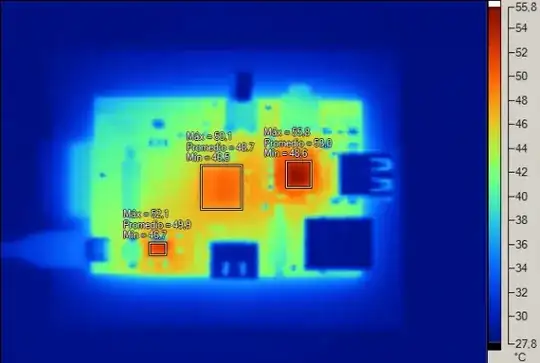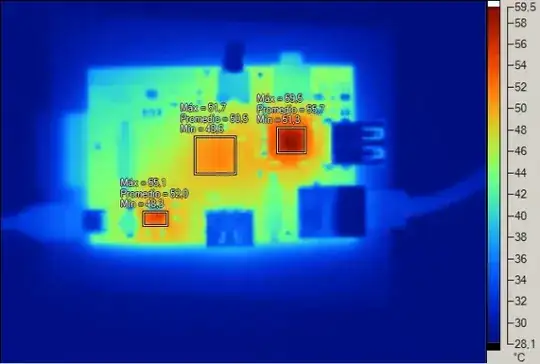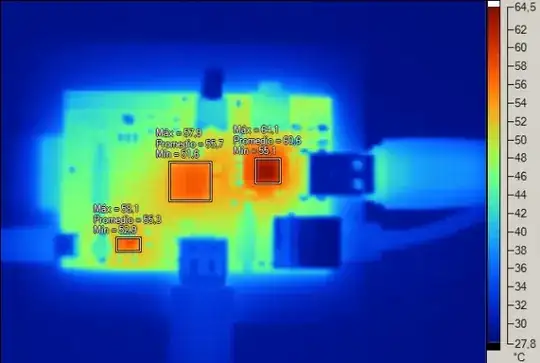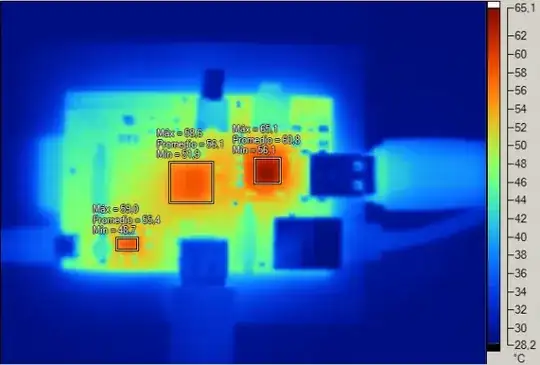What are the main sources of heat on the board?
What temperatures do these components reach under load?
What are the main sources of heat on the board?
What temperatures do these components reach under load?
HackADay posted a link to an article (in Spanish - translated to English) with some thermal images, I'll summarise it:
There are three main sources of heat -
The input voltage regulator (bottom left).
This regulates the input down from Vcc to 5V. Assuming this is a linear regulator, power dissipation will equal P=(Vcc-5)*I, where I is the current usage of the device.
If you supply the board with 6V, and draw 0.5A, the power dissipated by this chip will be (6-5)*0.5 = 0.5W.
SoC BCM2835 (middle). This contains the ARM11 CPU, GPU and RAM.
LAN951 (right). This is the USB/Ethernet controller.
The following tests were performed at an ambient temperature of 26-27°C with no draft.
Idle - no Ethernet:

Idle - Ethernet connected:

CPU Stress Test:

High Definition Video Playback:

Conclusion
From the above tests we can conclude that the hottest component is the Ethernet/USB controller, with a maximum of ~65°C (37°C above ambient). The CPU/GPU reaches ~59°C (31°C above ambient), whilst the voltage regulator reaches ~59°C (31°C above ambient).